On June 6 at the TU-Automotive E-Mobility Conference in Novi, Michigan I delivered my presentation, “When Will EVs ‘Cross the Chasm’ Into the Mainstream in the US?”
The E-Mobility track at the TU-Automotive conference was unfortunately not very well attended due to some poor planning by conference organizers, but those in attendance for the two-day track made lots of connections and heard some great sessions and panels.
I had the honor of being the last speaker of the conference, following speakers and panelists from ChargePoint, Ford, General Motors, EVgo, EV-Volumes, Toyota, Navigant, eMotorWerks, and many more. I’d like to say – not so modestly – that I closed the conference with a rousing session of energy, passion, original research and great audience interaction.
With only 25 minutes for sessions, as a speaker you had to pack a lot of content into your session. As such, my goal for the session was to share my just completed regression analysis research on what drives EV sales in the US, my latest EV sales forecast, and outline some key factors that will likely help or hinder EV adoption.
Slide Presentation on SlideShare
Here is a PDF of my full slide presentation posted on SlideShare:
Selected Slides and Commentary
In this article I thought I would share selected screenshots of several slides from the 36-slide presentation and add some underlying comments to provide a high-level flavor of my presentation:
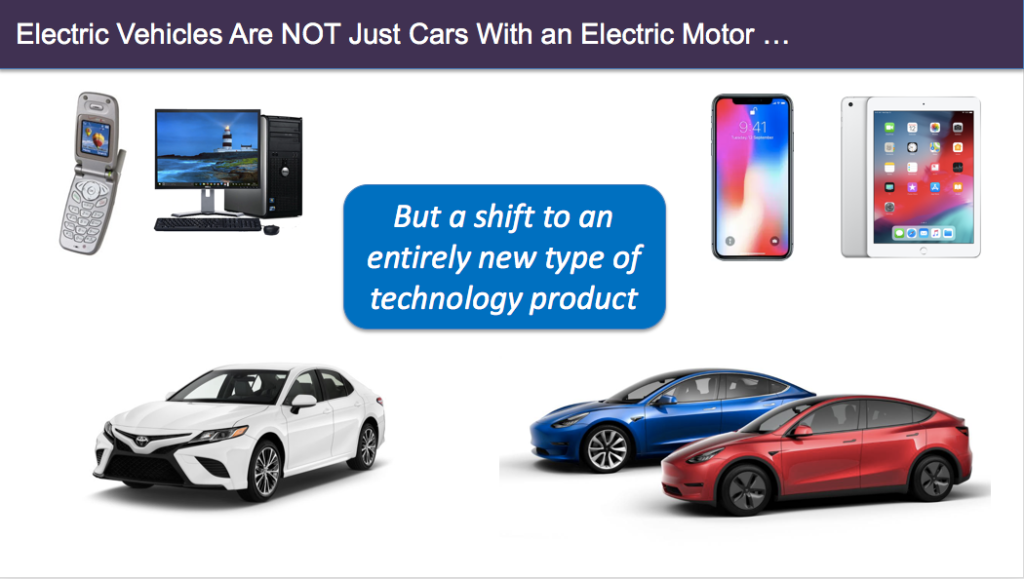
My opening slide represented a key point I wanted to convey, especially to the attendees from Detroit and/or the legacy automakers. It turns out I was a bit stunned by some of the representatives of both US and foreign automakers who still seemed to be either in denial about the future of electric vehicles, or they simply lacked any experience driving an EV. Some of these executives were leading various EV-related research or programs with their employers, but none of them appeared to actually drive an EV or actually believe that they were the future.
But my fundamental point with this slide was to convey that you can’t think of EVs as simply a car with a different type of powertrain. EVs must be thought of as entirely new type of technology product.
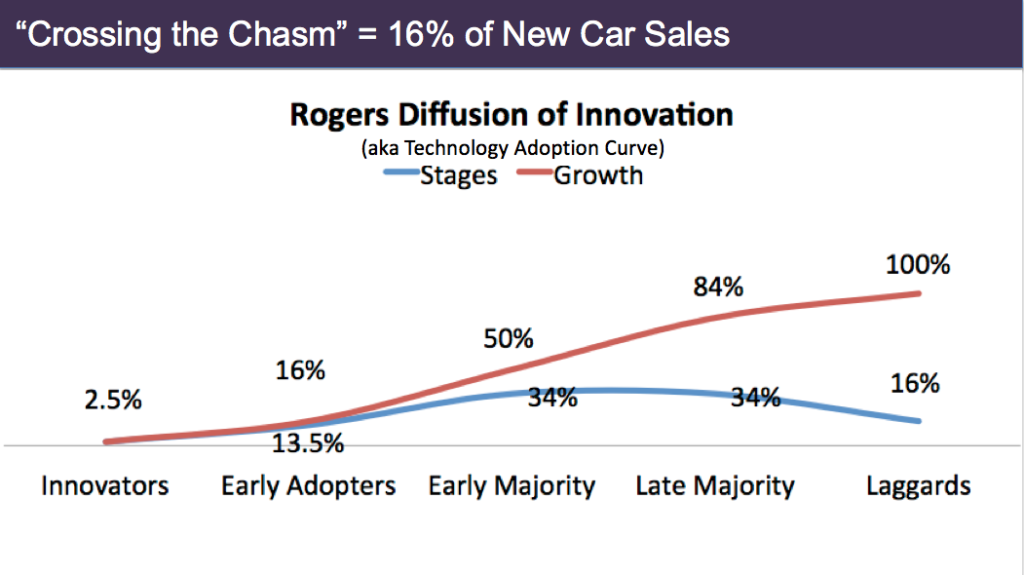
The second reason for the opening slide around EVs being a technology product was to set up a foundational concept I’ve been using as the basis of everything EVAdoption the last three years. And that is the Rogers Diffusion of Innovation construct, more commonly known as the “technology adoption curve.”
In this adoption curve, people purchase emerging products in stages and the most important point is when a product category “crosses the chasm” from “early adopters” into the mainstream and the “early majority.” In our world this simple means when 16% of new vehicle sales are electric vehicles.
While the EV sales share overall across the US fell just short of 2% (1.97%) in 2018, California nearly hit 8% and accounted for just under 47% of all US EV sales. And in fact at the end of 2018, California surpassed 10% during a few months. Beyond California, most of the states with higher EV sales share are located on or near the two coasts.
So while consumers in a few states are buying EVs at a pretty good rate, most are not. Why not? I’ve analyzed probably a dozen surveys over the last few years and while the order of the reasons is not always the same, the top reasons for not buying EVs is virtually identical, as listed in the slide below.
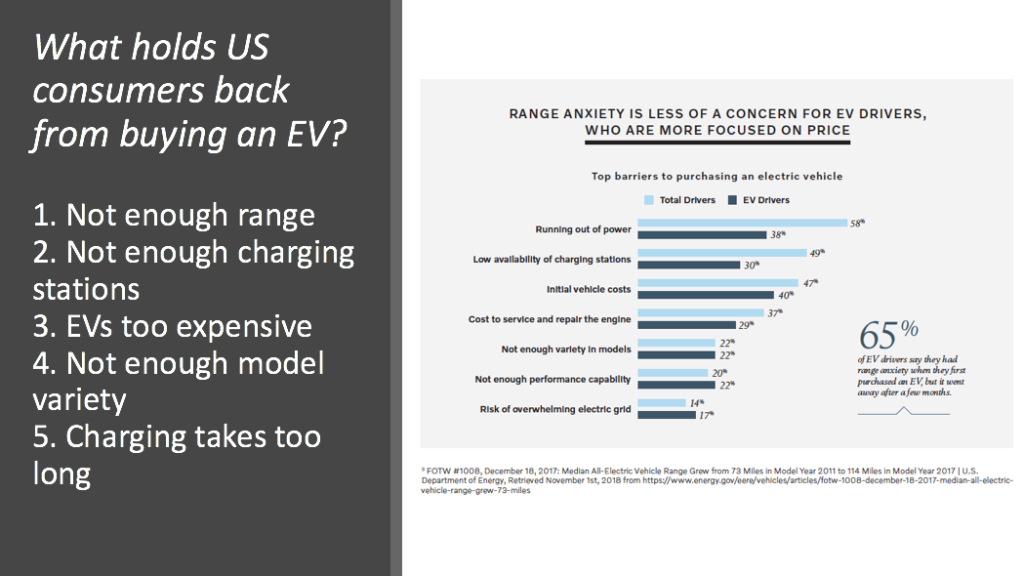
So then why DO consumers in the US buy EVs? Survey research and anecdotal conversations I’ve had with everyone I know who drives an EV does so first and foremost because they want to make a difference. They want to do their part in reducing carbon emissions and air pollution from fossil fuels.
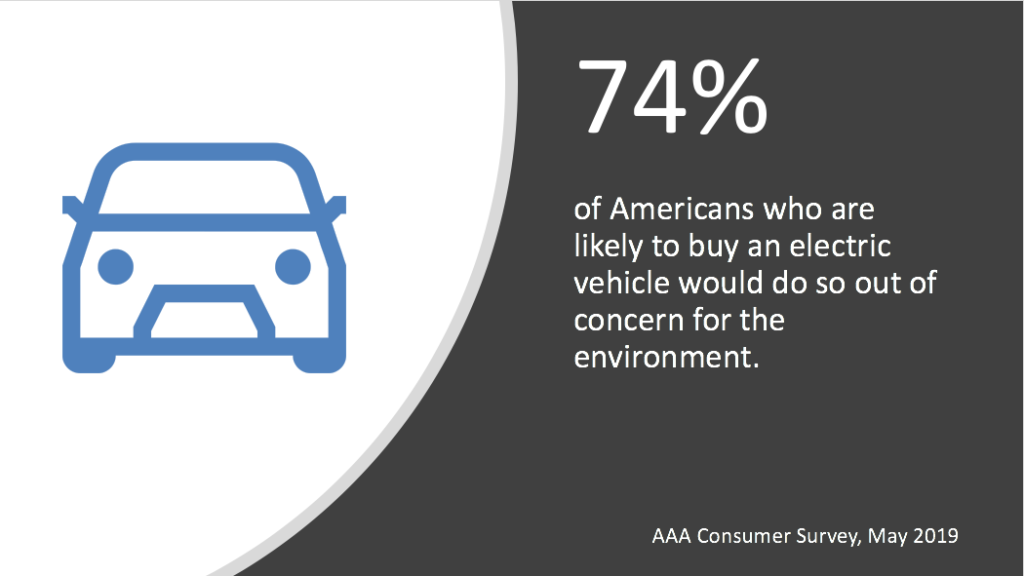
Across the US there is a huge “EV divide” with 6 states and the District of Columbia purchasing EVs at greater than a 2% share in 2018. On the other hand, 26 states saw an EV sales shares of from 0.22% to 1%. What causes this huge difference across the US?
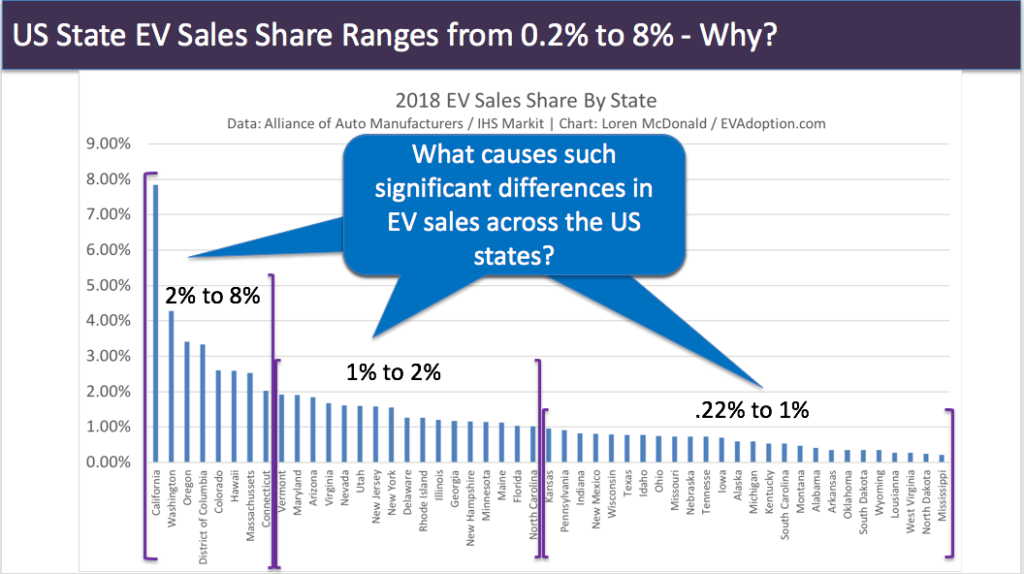
To attempt to answer this question, I conducted a regression analysis research project. (If you are not familiar with regression analysis, here is a primer from the Harvard Business Review.) I used the above state-by-state EV sales share percent from each state and Washington, D.C. as my dependent variable and ran 29 independent variables against it.
The variables I chose ran the gamut, including logical factors such as household income, the number of EV models available in the state, available state incentives, HOV lane access and the ratio of EVs to charging stations. But I also looked at less obvious or more obscure concepts such as the % of people with a bachelor’s degree, average winter temperatures, percent of people who believed climate change was happening, whether it was a red or blue state and many others.
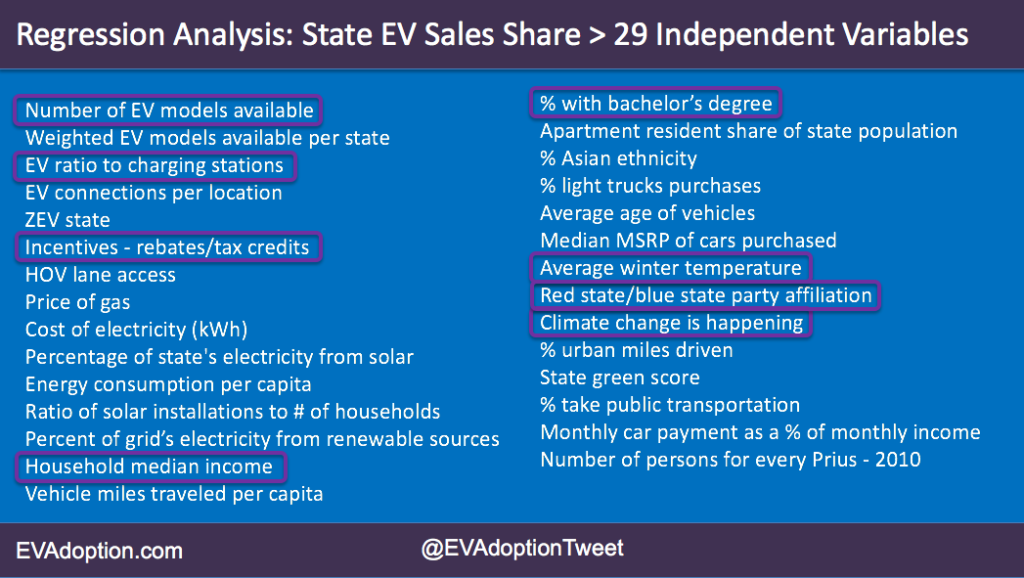
Of the 29 independent variables, only 7 made the cut with a statistically significant correlation to state-by-state EV sales share. Of those, the cost of gasoline had the highest correlation. In late 2016 I ran a similar regression analysis and gas prices also had the highest correlation in that analysis.
For me, having run this analysis previously – but with many fewer variables – there were no huge surprises. I did expect that the number of EV models available might rank a bit higher and also that the belief that climate change is happening and/or living in a red state/blue state might crack the final list.
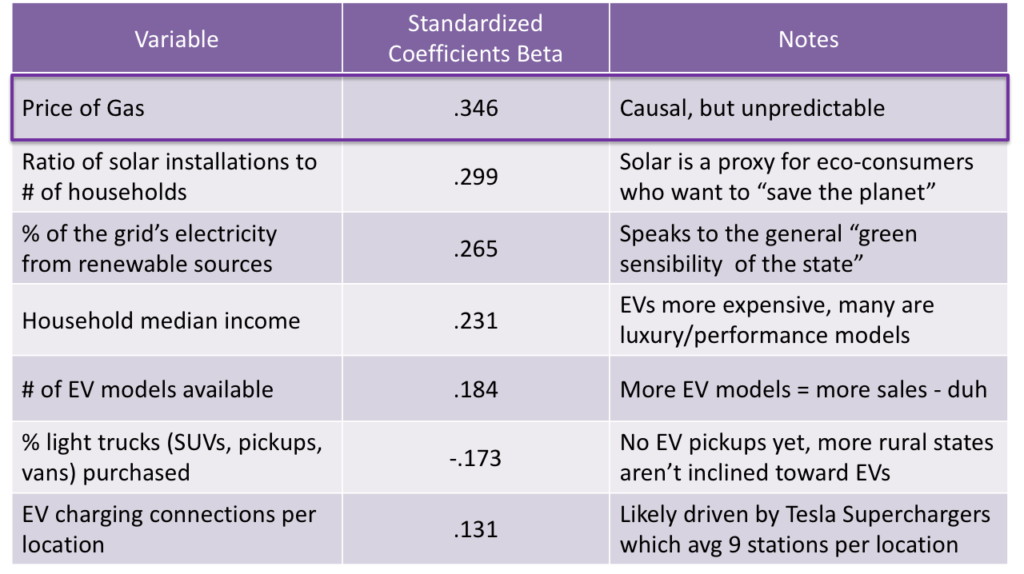
Perhaps the most interesting variable, but not surprising based on past surveys and research, is the correlation with the ratio of solar installations to the number of households. For many consumers, going with solar panels is a huge first step toward less reliance on fossil fuels, but it is also a great educational process about electricity and the grid. My household was no different. We had solar panels installed in 2014 and then in December 2016 got our first electric vehicle.
Editor’s Note: With this article I’m just touching on the findings from the regression analysis project and slides in the presentation. In a future article I will do a deep dive on the regression analysis project, the findings, and its implications.
With all of that research and set up in my presentation, I then shared my EV sales forecasts for 2019-2028 for both the US and California. I anticipate that the EV sales share will reach 16% in 2022 in California, but not until 2028 for the entirety of the US. With California expected to continue to account for 40% to 50% of US EV sales for several more years, more than half of the states will likely continue to be laggards and may not reach 10% sales share by 2028.
Factors That Will Help or Hinder US EV Adoption
I closed out the presentation with a brief look at several factors that will either help or could slow adoption of electric vehicles in the US. I’ll touch on three of them:
- Gas Prices: The price of gas is not only the most important factor, but the most unpredictable and least controllable. If gas prices rise to near or above $4 per gallon in non-coastal states, we could see a huge increase in interest in EVs. On the flip, if gas prices stay relatively low for the next 5-10 years, EVs will have to improve in multiple areas before mass consumers adopt electric vehicles.
- Battery Range: The one area I’m least concerned about is the range of BEVs. By my analysis, BEVs available in the US will average around 300 miles of range by 2023. Crossing the “300” mile threshold is a significant real and mental barrier that will open most consumers to considering an EV for their next vehicle.
- EV Charging for Renters: On the flip side, one area I continue to be concerned about is the availability of charging for households that rent, live in condos or high-density housing without convenient access to home charging. In the US this population equates to about 40% of households, a significant hurdle to overcome. Most multifamily housing owners are reticent to invest in EV charging infrastructure, so until they do, urban charging centers and charging stations at retail and mass transit locations will be key.
I closed my presentation with one of my favorite quotes of the last few years:
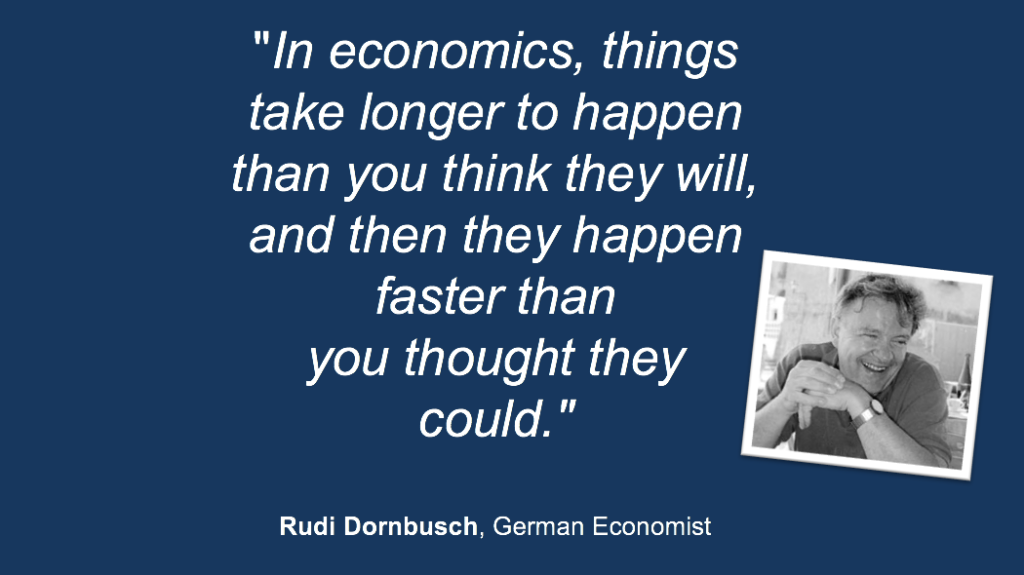
While the Rudi Dornbusch quote is about economics, it fundamentally applies to the adoption of emerging technologies, in this case electric vehicles. While markets with significant government mandates or incentives, including Norway, China, Sweden and The Netherlands are seeing huge and increasing rates of EV adoption, the US market will take much longer to cross the chasm into the mainstream.
Fundamentally the US is actually comprised of four different markets: 1) California; 2) About a half-dozen high-adoption states including Washington and Oregon; 3) Somewhat motivated and interested states mostly on or near the coasts such as New York, Georgia, New Jersey, Arizona, Nevada and others; and 4) The middle and southern states that at least for now, are going to go kicking and screaming into the driver’s seat of an EV.
The US will get there, but without high gas prices, significant government intervention or a huge near-term breakthrough in battery prices – mass adoption of EVs across the US is likely almost another 10 years away.
Please share your feedback in the comments below. I’d also appreciate it if readers would share this blog post and/or the link to the presentation on SlideShare to their social network of choice.
And if you’d like for this presentation to be given to your company, organization or event, please send me an email to: loren @ EVAdoption.com (no spaces, this is done so spammers will not harvest the email address).

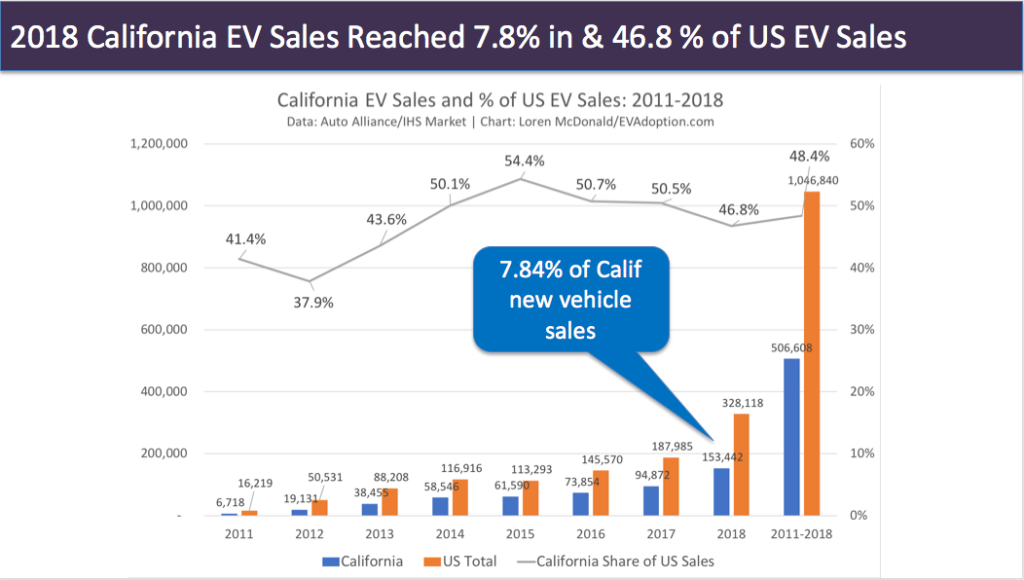
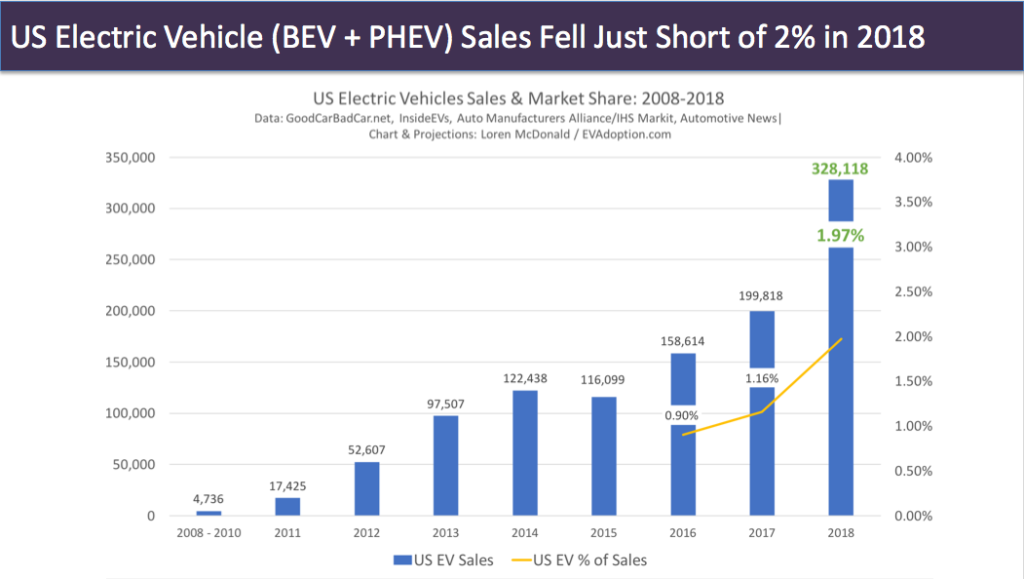
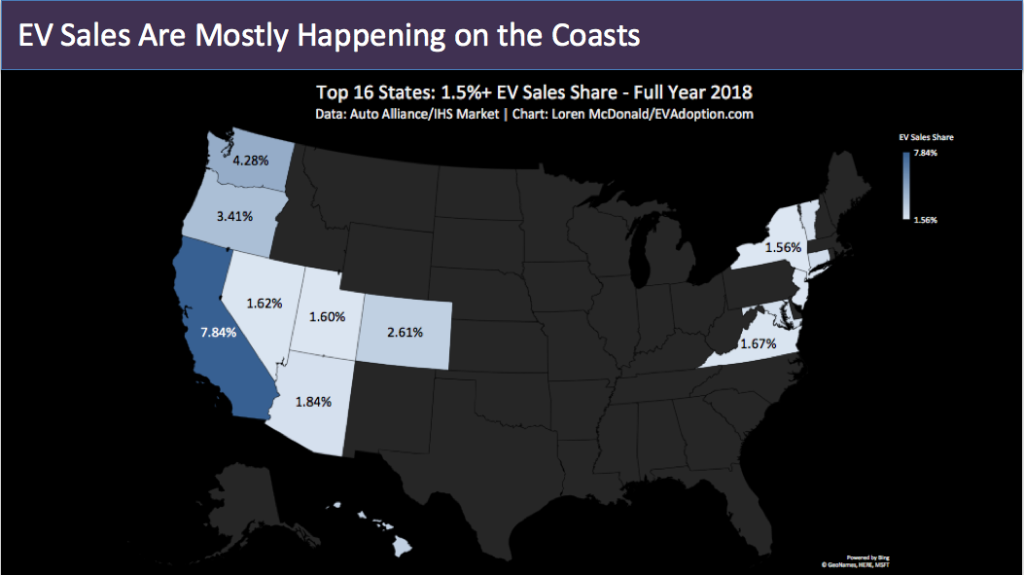
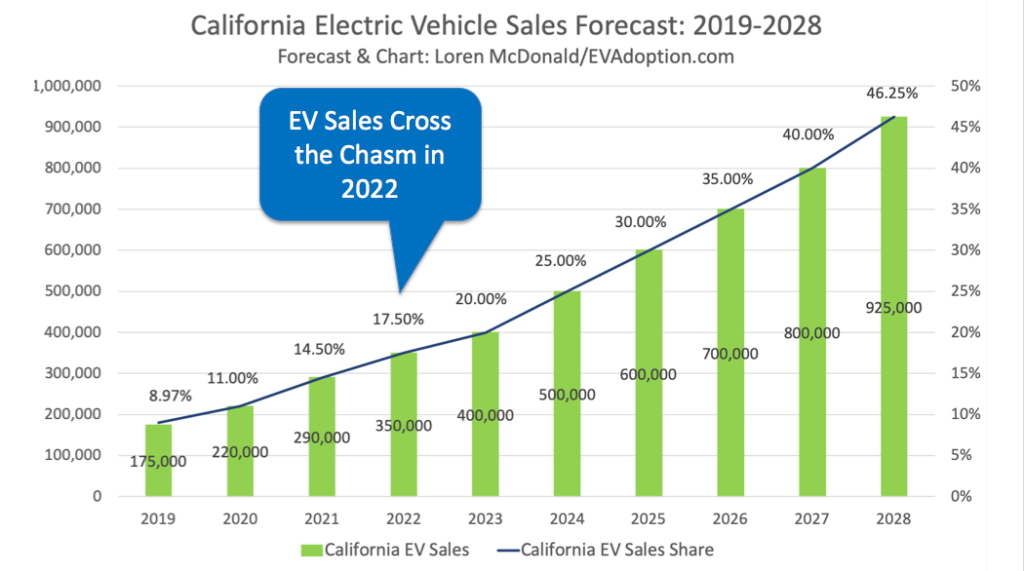
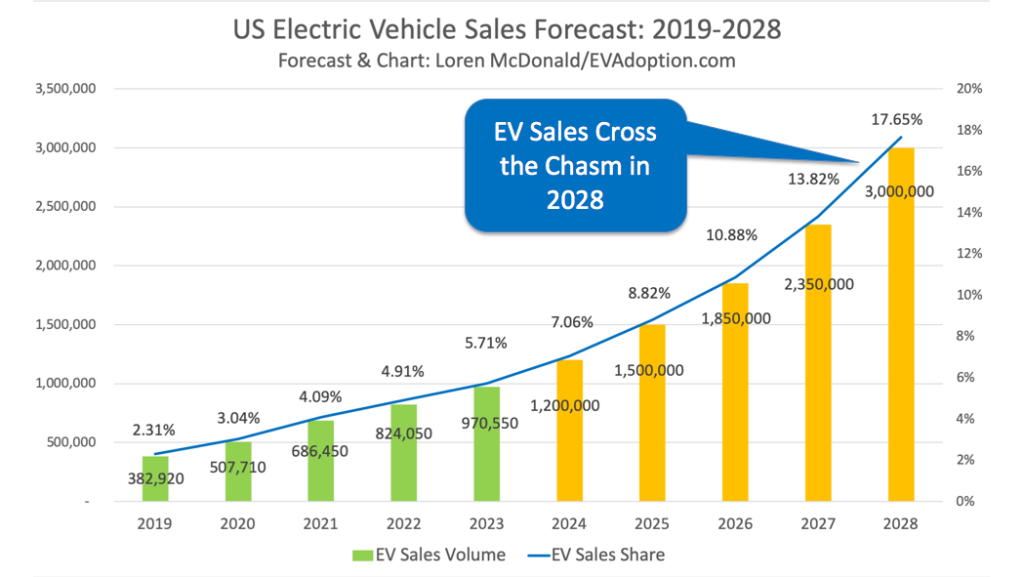
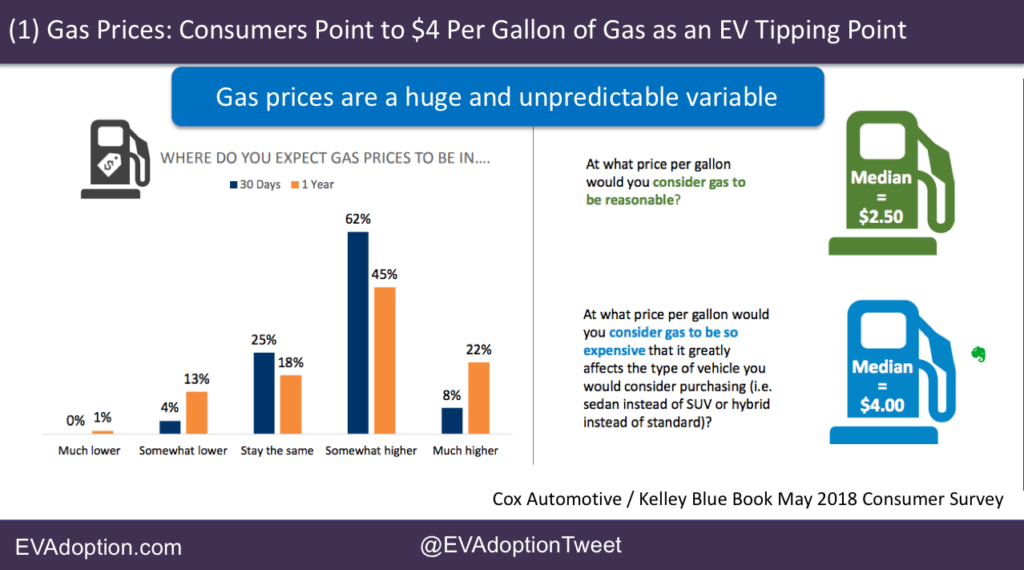
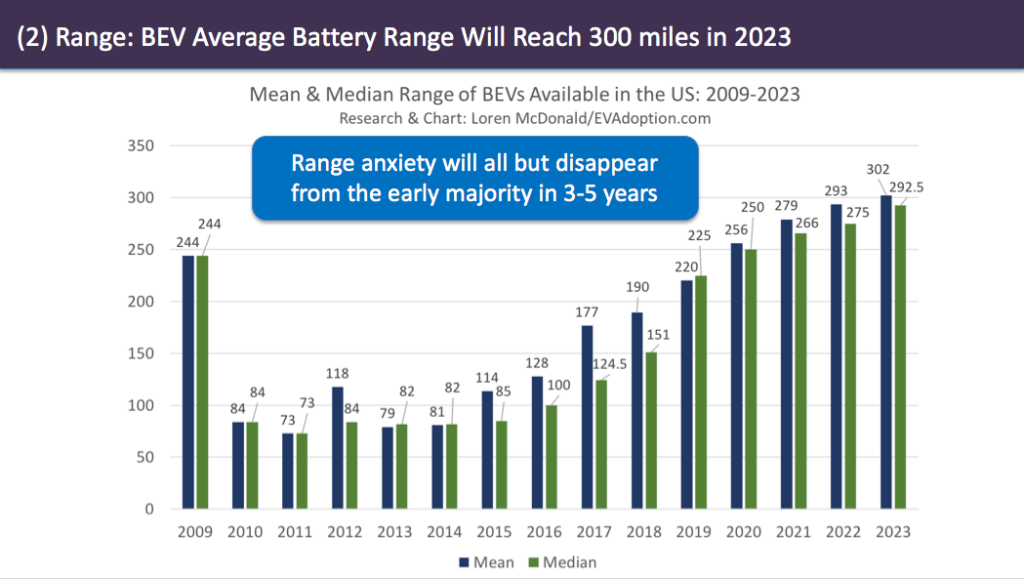
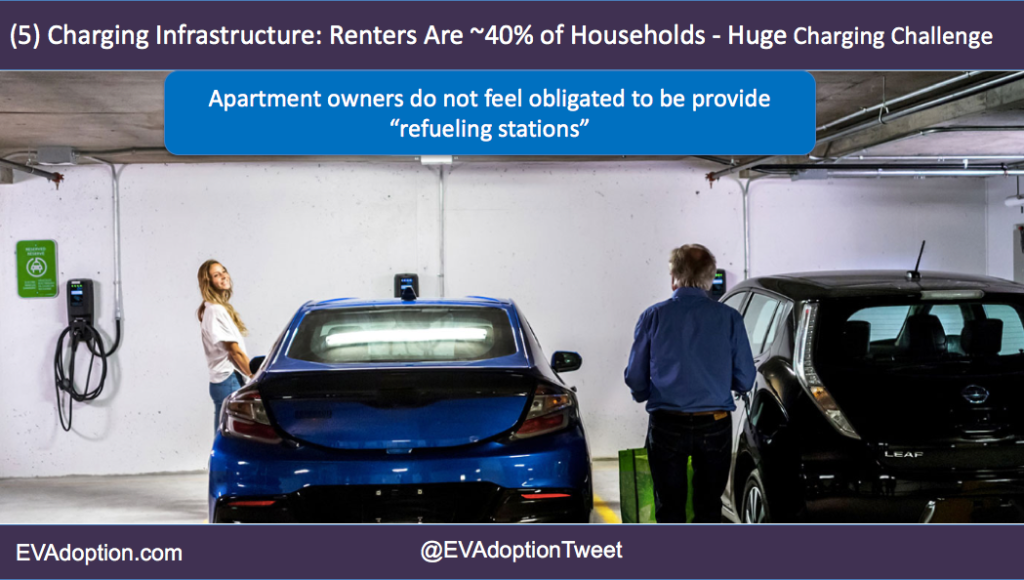

3 Responses
Good presentation but a couple of misused words.
1) “poor planning buy conference” – should be by, not buy.
2) “screaming into drier’s seat” – should be driver’s.
I’d love to see a YouTube video of this presentation.
Thanks for catching the typos Anthony, now fixed! Unfortunately the session was not video recorded, but I’m think about recording myself either doing it as a presentation in my living room, or just as audio on top of the slides.
Great presentation. I work with an electric motorcycle company (aka ZEM) and parsing data on EV adoption is always interesting because of the traditional differences between the motorcycle and car industries, or rather, the differences between the psychology of the motorcyclist vs. the car owner.
Perhaps a few comments from a die-hard motorcyclist in the EV industry may be useful for your readers: as the attitudes or motivations of motorcyclists regarding EV is not dissimilar to the resistance EV faces from a large segment of the U.S. population, particularly between the coasts.
In my experience, not all of the resistance to EV is based on practical considerations.
The tendency to make EV acceptance an ideological or political litmus test can have a detrimental effect on being able to convert skeptics to electric because it creates unnecessary polarization. Hence, although electric motorcycle sales theoretically benefit when consumers have higher ecological awareness and when governments encourage or mandate EV, we prefer to make the key reason to purchasing ZEM the excitement and enjoyment of the ZEM riding experience. (This IMO has also been the Tesla approach.)
The adoption of electric motorcycles faces not only the same practical barriers as for cars, but additional psychological barriers based on the inherent attitudes of the average motorcyclist: particularly peer leaders. Why? Because:
1) Existing disparity between owners of ICE motorcycles and cars is magnified when electric is brought into the picture. Motorcycles (at least in the U.S.) have always represented freedom and thrills, rather than practical virtues. Electric is often disdained as boring, utilitarian, i.e., an “appliance”.
2) Motorcyclists are suspicious of continuing government regulation, because every attempt to improve street or highway safety impacts motorcycle owners disproportionately – as do increasing restrictions on access to off-road riding areas, particularly for younger riders. Government encouragement of EV is therefore seen in the same light: another step towards the deliberate destruction of the freedoms enjoyed by existing motorcyclists.
3) The U.S. motorcycle industry has been in serious decline (- 60% in new sales since 2008 while cars at least hold steady) over the past decade. The cause is the failure of younger consumers (esp. Millennials) to embrace motorcycles as previous generations did. For some in our industry, electric seems a way out of the morass, but riders themselves are not yet convinced.
4) ZEM sales were less than 1,500 out of about half a million new motorcycles sold in 2018 – < 0.3% versus almost 2% for EV overall as your presentation points out. So adoption of electric motorcycles would be further down your Rogers Curve.
My point is that psychological resistance to EV adoption shouldn't be underestimated. There might be only 10 million motorcyclists in the U.S., but their attitudes to personal freedom are very likely shared by a majority of Americans. These persons might give practical reasons for resistance to EV, but there might be an underlying motivation that isn't voiced in polling or surveys.
My two cents. Thank you for sharing the presentation. Excellent work.